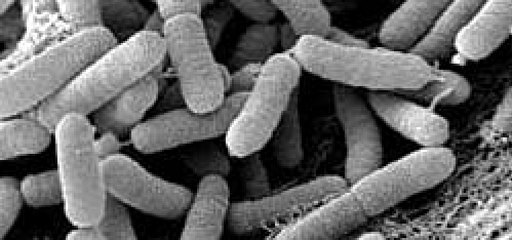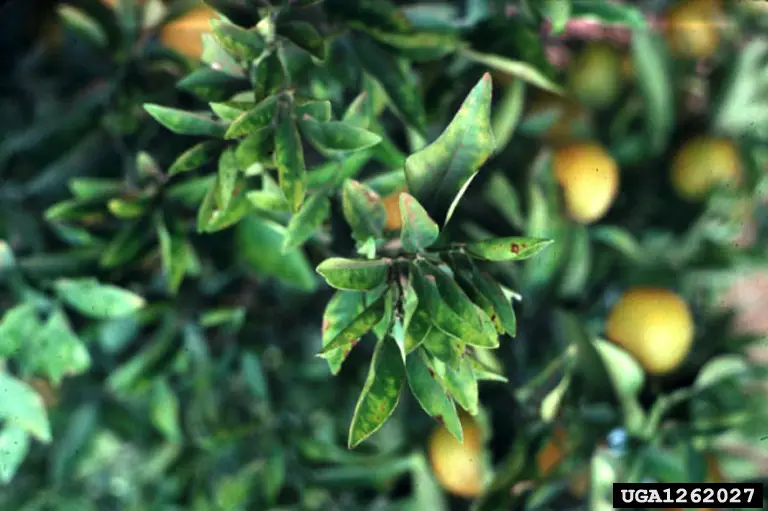Xylella Fastidiosa
Classification, Characteristics, Disease/Treatment
Classification
Xylella fastidiosa is a Gram-negative, pathogenic bacterium that can infect more than 500 plant species.
It's classified as follows:
· Kingdom: Bacteria - Like other bacteria, X. fastidiosa is a prokaryote characterized by a simple cell structure lacking membrane-bound organelles. In addition, they have a cell wall in place that consists of a peptidoglycan layer.
· Phylum: Proteobacteria - X. fastidiosa belong to the phylum Proteobacteria which is a large phylum of Gram-negative bacteria. A good number of these species move by means of flagella while others, like Xylella fastidiosa, move by gliding. The group is also very diverse and consists of both free-living and pathogenic species.
· Class: Gammaproteobacteria - Consisting of about 250 genera, Gammaproteobacteria is a class of Gram-negative bacteria that are well distributed in the environment. Depending on the species, they may have flagella for motility (polar or peritrichous flagella) while others lack this structure.
While some of the species are capable of forming a symbiotic relationship with other organisms, others are pathogenic while others live freely in aquatic and terrestrial environments.
· Order: Xanthomonadales - The order Xanthomonadales consists of Gram-negative bacteria that are characterized by a rod-shaped morphology and do not form spores. They are generally aerobic and are catalase positive. The group also consists of many plant parasites.
· Family: Xanthomonadaceae - Members of the family Xanthomonadaceae (about 23 genera) are Gram-negative rods that move by means of type IV pili. As such, they lack flagella used by some bacteria for motility.
Some of the genera in this family (e.g. Rhodanobacter and Xanthomonas etc) have been shown to be involved in the degradation of petroleum hydrocarbons.
· Genus: Xylella - The genus Xylella consists of Gram-negative rods. Members of this group are plant pathogens that are mostly transmitted by insects. Here, Xylella fastidiosa is one of the most popular members of the genus Xylella.
· Xylella fastidiosa: Xylella fastidiosa is a common plant pathogen belonging to the genus Xylella.
Characteristics of this species are discussed below in detail:
Characteristics
Morphology
As mentioned, members of the genus Xylella are Gram-negative rods. As such, they are classified as bacillus bacteria based on shape.
With regards to size, the species Xylella fastidiosa ranges from 0.3 to 0.5 um in diameter and 1.5 to 3.0 um in length. In culture, the bacterium produces small and circular colonies that tend to be dome-shaped.
Structure
Pili - Like other members of the genus Xylella, Xylella fastidiosa does not possess flagella. However, studies have identified the presence of type I and type IV pili on one pole of the cell. Type IV pili in of this bacterium are regulated by the gene pilG which is involved in chemotaxis responses.
Some of the proteins involved in the assembly and retraction of the pili include Pi1B, Pi1U, and Pi1T among others. For Xylella fastidiosa, the presence of pili, particularly the longer pili, is important for motility (twitching motility).
While type IV pili are involved in motility, type I pili, which are shorter, are involved in the formation of biofilm (an assemblage of one of several types of bacterial cells).
Cell envelope - Like many other Gram-negative bacteria, Xylella fastidiosa have an outer and inner membrane as well as a peptidoglycan layer in between the two. Lipopolysaccharides (LPS), which contribute to the pathogenicity of the bacterium, is one of the most important components of the outer membrane.
For Xylella fastidiosa, in particular, these molecules are suggested to consist of long chains of the O antigen which plays a crucial role in delaying the initial recognition. Moreover, the bacterium also releases outer membrane vesicles (OMVs), which are spherical particles that range between 30 and 3000nm in diameter.
Among Gram-negative bacteria, released OMVs can spread a long distance from the cell releasing them. This has been shown to play an important role in the systemic dissemination of Xylella fastidiosa thus contributing to its pathogenicity.
A cell wall is located between the inner and outer membrane. This cell wall is characterized by a wavy pattern (rippled) and consists of a single, thin layer of peptidoglycan. Lastly, the bacterium has an inner membrane located beneath the cell wall.
This membrane has similar characteristic to the plasma membrane found in eukaryotic cells and also serves similar functions - it regulates the movement of substances in and out of the cell.
Distribution
Although Xylella fastidiosa is native to the Americas, climate change among other factors has resulted in its spread to other parts of the world, particularly Europe and parts of North Africa, etc.
While the bacterium can infect a wide range of plants as its host, a wide variety of insects also serve as its vector. This is particularly beneficial for the bacterium given that having a spectrum of vectors reduces preventive measures aimed at reducing plant infections.
Apart from the spectrum of vectors and the wide range of hosts, there are also several subspecies of the bacterium that can be found in different types of plants.
Some of the plant hosts of Xylella fastidiosa include:
- Grapevines
- Citrus plant
- Peach
- Olive
- Coffee
- Almond plants
Subspecies of Xylella fastidiosa
Xylella fastidiosa are divided into four main subspecies which include Xylella fastidiosa subspecies fastidiosa, Xylella fastidiosa subspecies multiplex, Xylella fastidiosa subspecies pauca, and Xylella fastidiosa subspecies sandyi.
This genetic diversity of the bacterium has proved beneficial for its distribution given that the four can be found in different regions where they exhibit host specificity.
The following are some of the regions in which the four subspecies can be found and the plants they infect:
· Xylella fastidiosa subspecies fastidiosa - Found in south Central America, this subspecies is responsible for Pierce's disease and leaf scorch in grapevines and almonds respectively. The subspecies has also been recovered from some trees and perennials
· Xylella fastidiosa subspecies multiplex - Originated from the temperate and subtropical parts of North America and can be found in parts of South America. It's responsible for scorch disease in different types of trees, leaf scorch of plum, as well as phony peach disease
· Xylella fastidiosa subspecies pauca - Originated from South America and is responsible for strains related to disease in coffee and citrus
· Xylella fastidiosa subspecies sandyi - Originated from Central America and can be found in the Southern part of the United States. It's responsible for leaf scorch of oleander
Disease
Xylella fastidiosa is a xylem-limited pathogen which means that it specifically infects the xylem, the vascular tissue involved in water transport in plants. As mentioned, the bacterium is transported from one plant to another by insect vectors. The diseases caused by the bacterium are therefore vector-borne diseases.
The majority of insects that act as vectors for the bacterium belong to the suborder Auchenorrhyncha in the Order Hemiptera. This includes members of the superfamilies Cercopoidea, Cicadoidea, and Membracoidea.
Generally, an insect acquires the bacterium while it feeds on an infected plant and transports it to another plant as it moves from one plant to another in search of xylem sap.
Following the ingestion of the bacterium by the vector, studies have shown the pathogen to persist and even multiply in the foregut parts (e.g. pharynx, esophagus, and crop, etc). For this reason, bacterial cells are transmitted in their adult/mature form.
In the foregut, the bacterium forms a biofilm monolayer in a manner that ensures the cells receive sufficient nutrition. However, the formation of a biofilm is not necessary for successful transmission of the pathogen.
* For the most part, only a few bacterial cells are required to cause a successful infection in the host.
The bacterium, Xylella fastidiosa, is then transmitted to a new plant while the vector feeds on xylem sap. Given that xylem sap is low on nutrition, such insects as spittlebugs have to eat significantly more (as much as 1,000 times their body weight each day) in order to meet their nutritional requirements. This feeding behavior increases the chances of transmitting the pathogen to the plant.
Following transmission, the bacterium gradually migrates down the xylem tissue as the signs of infection begins to manifest. In moving downwards, it's worth noting that the pathogen is moving against the transpiration stream (movement of water molecules from the roots upwards and its evaporation through the leaves and stem, etc). For this reason, Xylella fastidiosa has to use type IV-pilus in order to successfully do this.
Based on microscopic studies, the bacterium has been shown to move at speeds of about 5um min−1. Although type I pili are important for anchoring, it also plays an important role in biofilm formation within the xylem tissue.
Basically, twitching motility of the bacteria involves the extension of the pili, attachment to the surrounding surfaces followed by retraction of the pilis. Through this cycle, the bacteria are able to move in a single direction against the stream.
As the bacterium translocates, it also forms a biofilm in the xylem tissue which not only protects the cells, but also enhances the uptake of nutritional material. These events directly affect the chemical composition of the xylem sap and the normal mode of water as well as nutrient transportation to the leaves and stem as the bacterium continues causing further blockages.
Here, some of the symptoms likely to be observed due to this infection include yellow and browned areas of the leaf as well as wilting of foliage followed dieback and death of the plant.
Some of the most common diseases caused by the bacterium include:
· Phony peach disease - Affects peach trees and is associated with stunted growth as well as reduced yields.
· Alfalfa dwarf - This is a disease that affects the Alfalfa (lucerne) plant used for grazing and silage etc. Although symptoms and signs of the infection may be delayed, they include smaller leaves of the plant with darker spots. However, yellow rings may be observed in some plants in addition to reduced yields.
· Pierce's disease - Piece's disease occurs in grapevines and is characterized by leaves with yellow or red margins, drying of the leaves as well as the development of green tissue on the primary shoots of the grapevine that gradually turn brown.
· Citrus variegated chlorosis - This disease affects citrus plants and is characterized by yellowing of parts of the leaves (between the veins) with a gradual development of brown lesions on the underside of the leaves.
Treatment
Due to the strains of the bacterium Xylella fastidiosa, a range of insect vectors, as well as the wide variety of plant hosts, no individual control method has proven effective in successfully controlling the diseases in most regions. In cases where infestations are heavy, removing and burning diseased plants is recommended to slow down the infection.
For treatment purposes, researchers are currently experimenting with zinc, copper, and citric acid compounds which are proving to be effective treatment agents.
See also: Pseudomonas
Return from Xylella fastidiosa to MicroscopeMaster home
References
Ana Perez-Sierra and Joan Webber. (2017). 9 things you need to know about Xylella fastidiosa.
Cheryl D. Galvani, Yaxin Li, Thomas J. Burr, Harvey C. Hoch. (2007). Twitching motility among pathogenic Xylella fastidiosa isolates and the influence of bovine serum albumin on twitching-dependent colony fringe morphology.
Luisa F. Cruz,a Jennifer K. Parker, Paul A. Cobine, and Leonardo De La Fuente. (2014). Calcium-Enhanced Twitching Motility in Xylella fastidiosa Is Linked to a Single PilY1 Homolog.
N. Denancé et al. (2017). Several subspecies and sequence types are associated with the emergence of Xylella fastidiosa in natural settings in France.
Purcell A.H. (2008) Transmission of Xylella fastidiosa Bacteria by Xylem-Feeding Insects. In: Capinera J.L. (eds) Encyclopedia of Entomology. Springer, Dordrecht.
Links
Find out how to advertise on MicroscopeMaster!






